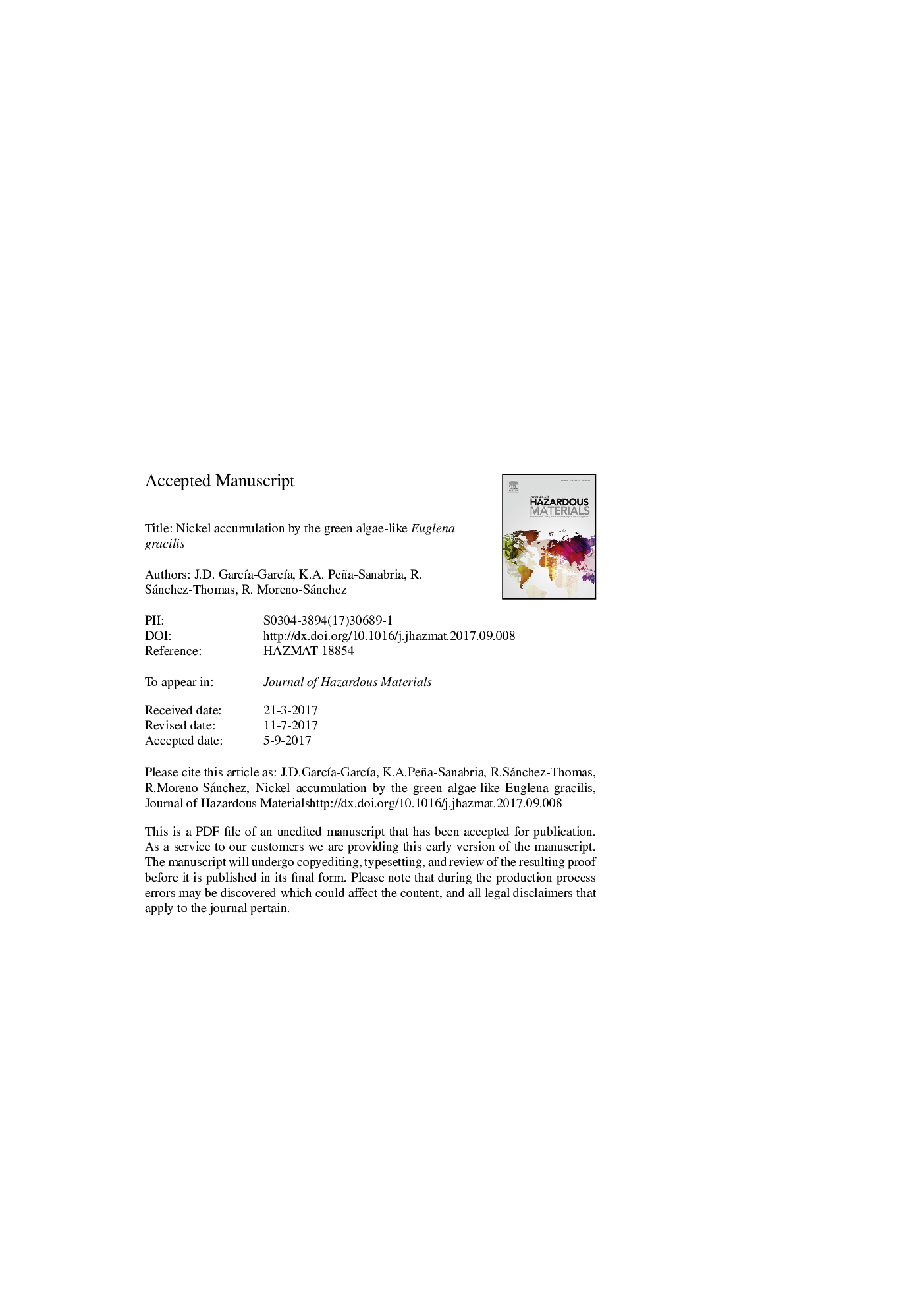| Article ID | Journal | Published Year | Pages | File Type |
|---|---|---|---|---|
| 4979143 | Journal of Hazardous Materials | 2018 | 35 Pages |
Abstract
Nickel accumulation and nickel effects on cellular growth, respiration, photosynthesis, ascorbate peroxidase (APX) activity, and levels of thiols, histidine and phosphate-molecules were determined in Euglena gracilis. Cells incubated with 0.5-1 mM NiCl2 showed impairment of O2 consumption, photosynthesis, Chl a + b content and APX activity whereas cellular integrity and viability were unaltered. Nickel accumulation was depressed by Mg2+ and Cu2+, while Ca2+, Co2+, Mn2+ and Zn2+ were innocuous. The growth half-inhibitory concentrations for Ni2+ in the culture medium supplemented with 2 or 0.2 mM Mg2+ were 0.43 or 0.03 mM Ni2+, respectively. Maximal nickel accumulation (1362 mg nickel/Kg DW) was achieved in cells exposed to 1 mM Ni2+ for 24 h in the absence of Mg2+ and Cu2+; accumulated nickel was partially released after 72 h. GSH polymers content increased or remained unchanged in cells exposed to 0.05-1 mM Ni2+; however, GSH, cysteine, γ-glutamylcysteine, and phosphate-molecules all decreased after 72 h. Histidine content increased in cells stressed with 0.05 and 0.5 mM Ni2+ for 24 h but not at longer times. It was concluded that E. gracilis can accumulate high nickel levels depending on the external Mg2+ and Cu2+ concentrations, in a process in which thiols, histidine and phosphate-molecules have a moderate contribution.
Keywords
Related Topics
Physical Sciences and Engineering
Chemical Engineering
Chemical Health and Safety
Authors
J.D. GarcÃa-GarcÃa, K.A. Peña-Sanabria, R. Sánchez-Thomas, R. Moreno-Sánchez,
